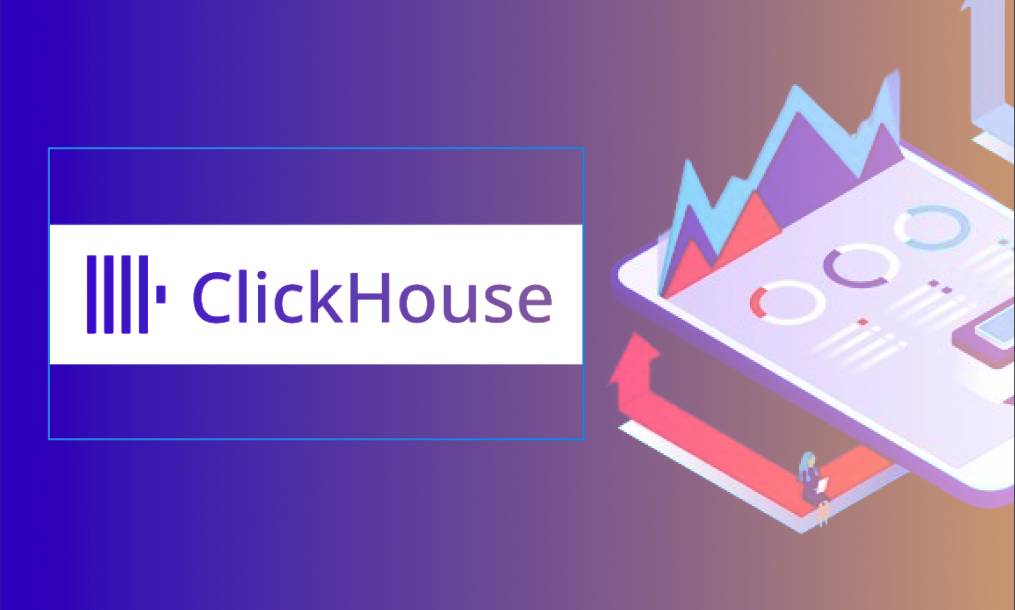As data grows exponentially, efficient, high-performance data storage solutions are critical. Enter ClickHouse, an open-source columnar database management system (DBMS) known for its speed and efficiency with large volumes of data. This article provides senior engineers, and CTOs with a comprehensive understanding of ClickHouse, its use cases, and how it compares to other popular data stores.
What is ClickHouse?
ClickHouse is a columnar DBMS designed for online analytical processing (OLAP). Developed by Yandex for internal analytics, ClickHouse has since been open-sourced and is now maintained by ClickHouse Inc. It handles petabytes of data with real-time query performance, making it ideal for big data applications.
Core Benefits of ClickHouse
High Performance: ClickHouse processes billions of rows per second, thanks to its columnar storage format and data compression techniques.
Scalability: ClickHouse scales horizontally by adding more nodes to a cluster, distributing data and queries across multiple servers for enhanced performance.
Real-time Analytics: Its architecture supports real-time data ingestion and querying, making it suitable for applications that require immediate insights.
Efficient Storage: The columnar format allows ClickHouse to compress data efficiently, reducing storage costs and improving query performance.
Open-source: As an open-source project, ClickHouse benefits from a large community of contributors and users, ensuring continuous improvement and support.
When to Use ClickHouse
ClickHouse shines in scenarios where high-performance analytics on large datasets are required. Here are some specific situations where ClickHouse is an excellent choice:
Real-time Analytics: For applications that need to process and analyze streaming data in real-time, such as monitoring systems, fraud detection, and financial trading platforms.
Data Warehousing: ClickHouse is ideal for data warehousing solutions where large volumes of historical data need to be queried and analyzed quickly.
Ad-hoc Reporting: When users need to run complex, ad-hoc queries on large datasets, ClickHouse delivers rapid query performance.
Event Data Analysis: For analyzing large volumes of event data, such as logs, user interactions, and telemetry data.
When Not to Use ClickHouse
Despite its strengths, ClickHouse is not a one-size-fits-all solution. There are scenarios where it might not be the best choice:
Transactional Workloads: ClickHouse is not designed for transactional (OLTP) workloads. It lacks support for transactions, ACID compliance, and row-level updates.
Small Data Sets: For applications with relatively small datasets, the performance benefits of ClickHouse may not justify the complexity of setting it up and maintaining it.
High Concurrency: While ClickHouse can handle many queries in parallel, it may struggle with workloads that require extremely high levels of concurrency due to its architectural design.
Comparing ClickHouse with Other Data Stores
ClickHouse vs. Apache Hadoop
- Performance: ClickHouse offers superior query performance due to its columnar storage and data compression techniques, making it more efficient for read-heavy analytical workloads.
- Ease of Use: ClickHouse is generally easier to set up and manage compared to the Hadoop ecosystem, which often requires complex configurations and integrations. Hadoop, with its HDFS and MapReduce, is better suited for large-scale batch processing.
ClickHouse vs. Apache Spark
- Latency: ClickHouse provides lower query latency compared to Spark, making it more suitable for real-time analytics. Spark excels in data processing and transformation but can suffer from higher latencies in interactive queries.
- Use Case: Spark is more versatile and can handle both batch and stream processing, while ClickHouse is specialized for OLAP workloads, offering unparalleled speed for analytical queries.
ClickHouse vs. PostgreSQL
- Query Speed: ClickHouse significantly outperforms PostgreSQL in analytical queries on large datasets due to its columnar storage. PostgreSQL is a row-based store, making it less efficient for large-scale analytics but excellent for OLTP workloads.
- Transaction Support: PostgreSQL is better suited for transactional workloads due to its ACID compliance and robust transaction support, making it ideal for applications requiring complex transactions and consistent data integrity.
ClickHouse vs. Amazon Redshift
- Cost: ClickHouse, being open-source, can be more cost-effective than Redshift, especially for organizations that can manage their infrastructure. Redshift's pricing model can become expensive as data scales.
- Flexibility: ClickHouse offers more flexibility in terms of deployment options, allowing on-premise or cloud-based implementations. Redshift is tightly integrated with the AWS ecosystem, which can be advantageous for AWS-centric infrastructures but less flexible for multi-cloud or hybrid environments.
ClickHouse vs. Other Data Stores
Use Cases for ClickHouse
Real-time User Analytics
ClickHouse's ability to handle real-time data ingestion and querying makes it ideal for tracking user behavior in real-time, providing immediate insights into user interactions and engagement. For instance, a social media platform can leverage ClickHouse to monitor user activity and generate real-time reports on engagement metrics.
Monitoring and Alerting Systems
For monitoring large-scale infrastructure or applications, ClickHouse can ingest and analyze logs, metrics, and events in real-time. This capability enables timely alerts and proactive incident management. A cloud service provider, for example, can use ClickHouse to monitor server performance and detect anomalies immediately, ensuring system reliability and quick response to potential issues.
Financial Analytics
In the finance industry, ClickHouse can be used to analyze trading data, detect anomalies, and generate real-time reports, supporting better decision-making and risk management. Financial institutions can leverage ClickHouse to process market data and execute complex queries for fraud detection and compliance reporting, enabling them to stay ahead of regulatory requirements and operational risks.
Ad Tech Platforms
ClickHouse can manage and analyze massive volumes of ad impression and click data, optimizing ad placement and targeting through real-time analytics. Ad tech companies can use ClickHouse to process billions of ad events daily, providing advertisers with insights into campaign performance and user behavior, thus enhancing ad targeting and maximizing return on investment.
IoT Data Processing
With its ability to handle high-velocity data streams, ClickHouse is well-suited for processing and analyzing data from IoT devices, facilitating real-time monitoring and insights. Manufacturers can use ClickHouse to monitor data from sensors and machinery, ensuring optimal performance and enabling predictive maintenance, which reduces downtime and maintenance costs.
Gaming Analytics
Game developers can use ClickHouse to analyze player behavior, track in-game events, and optimize gameplay experiences through detailed, real-time analytics. For example, a gaming company can use ClickHouse to analyze player retention rates, in-game purchases, and identify areas for improvement in game design, thus enhancing player engagement and satisfaction.
Migrating to ClickHouse: Advantages
Performance Gains: Organizations experiencing slow query performance with their current data store can benefit significantly from ClickHouse’s high-speed analytics. The shift to ClickHouse can dramatically reduce query times and improve the overall user experience.
Cost Efficiency: Migrating from proprietary solutions like Amazon Redshift to ClickHouse can reduce costs due to its open-source nature and efficient storage capabilities. This cost-saving can be significant, especially for large-scale deployments.
Scalability: For companies struggling with scaling issues in their existing infrastructure, ClickHouse offers an excellent solution with its horizontal scalability and distributed architecture. This ensures that the system can grow seamlessly as data volumes increase.
Real-time Capabilities: Businesses requiring real-time data processing and analytics, currently limited by their existing systems, can leverage ClickHouse to gain real-time insights. This is crucial for applications that demand instant data processing, such as financial trading platforms and monitoring systems.
Flexibility and Control: Migrating to ClickHouse from cloud-dependent solutions provides more control over the infrastructure and the flexibility to customize the deployment according to specific needs. This can be particularly advantageous for organizations with stringent compliance and security requirements.
Where to go from here?
ClickHouse is a powerful addition to the big data landscape, offering unmatched query performance, scalability, and efficiency for real-time analytics on large datasets. While it excels in specific use cases, such as real-time user analytics, monitoring, and financial analysis, it may not be the best fit for transactional workloads or small datasets. By understanding its strengths and limitations, practitioners, senior engineers, and CTOs can make informed decisions about integrating ClickHouse into their data infrastructure, leveraging its capabilities to drive insightful analytics and informed business decisions.
For those considering adding ClickHouse to their data arsenal, it's essential to evaluate the specific requirements of your use case, the existing infrastructure, and the expertise available within your team. With the right implementation, ClickHouse can provide significant performance gains and support the development of data-driven applications that require real-time, high-performance analytics.






